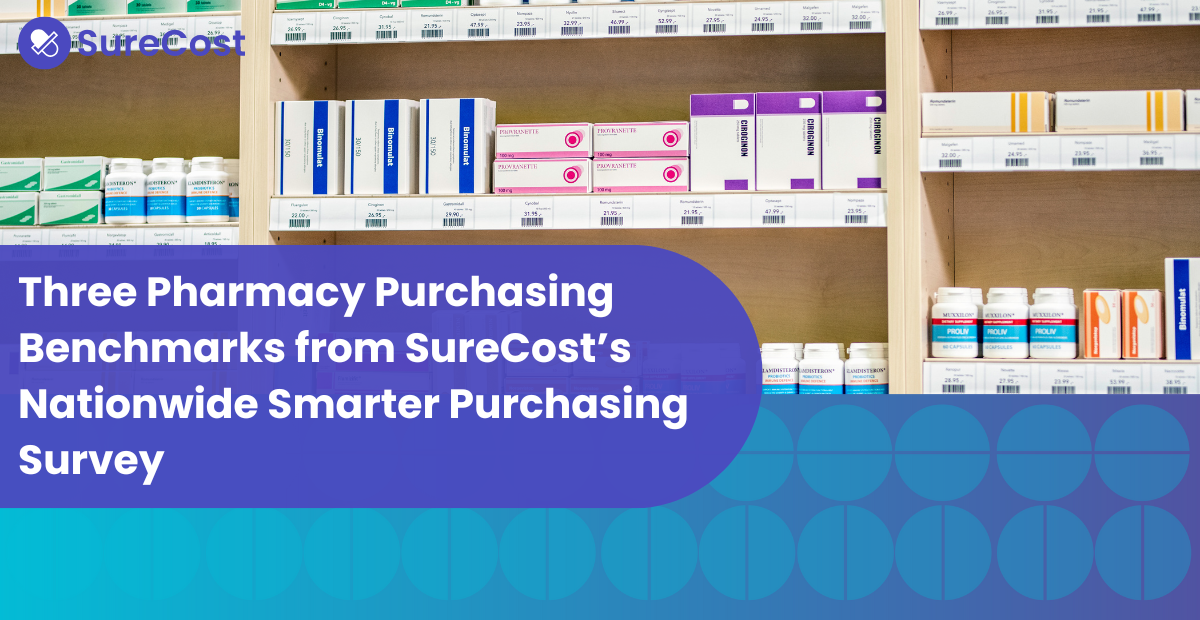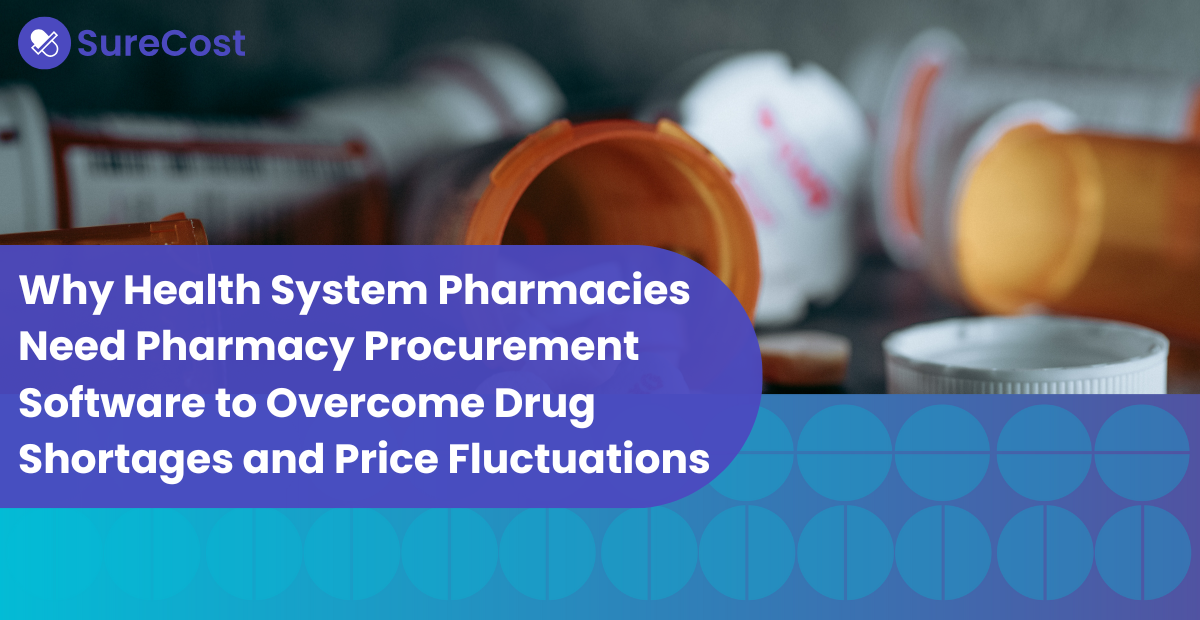Chief financial officers always have their eyes on their health system’s bottom line. So, they might not be surprised by a report that pharmacy operations accounted for 25% of hospital revenue. Obviously, that’s a significant cut of their bottom line. But the same article also pointed to “regulatory shifts, technological advancements and evolving patient expectations" further complicating the financial landscape. That’s in addition to rising drug prices, increasing drug shortages and the sheer operational complexity of providing quality patient care while staying solvent. Again, if you’re a CFO, probably no surprises there—just a lot of challenges ahead.
To effectively navigate these financial challenges, CFOs must tackle pharmacy operations. This article explores how a smarter purchasing strategy drives savings, builds business intelligence and enables efficient inventory management.
Enhanced Procurement
Unfortunately, if your healthcare system is still relying on “business-as-usual” pharmacy purchasing, it’s likely losing a lot of money. Traditional pharmacy purchasing silos processes (e.g., purchasing and receiving products under separate interfaces, having multiple vendor-specific workflows). Pharmacy purchasing itself is often a deliberately opaque process: a maze of product data, vendor catalogs and purchasing interfaces.
If your pharmacy team is stuck with manual processes and siloed systems, your health system can’t consistently find the best purchasing options. Drug prices in the United States are some of the highest in the world, so finding competitive drug sourcing is critical.
With a unified purchasing management solution, pharmacies consolidate all of their catalogs into a single interface. The system automatically compares options based on several factors (such as actual cost beyond the lowest “sticker price,” impact on compliance, availability and other variables). You can then upload all orders for multiple vendors and verify products when you receive them all through a single platform.
As the recent Smarter Purchasing Report shows, an expanded vendor portfolio enabled one cohort of pharmacies to shop outside the top 200 generic drugs, saving them over $255M in 2024.
When selecting a solution, health systems need to account for their complex purchasing structure. For example, does the solution compare pricing and availability for all WAC and GPO orders while supporting 340B orders? Will it integrate with your existing systems and processes?
Data-Driven Decision Making
Procurement data can yield important insights into overall spend, purchasing trends, compliance and other areas. Many health system pharmacies may be inundated with data, but they often struggle to turn it into actionable information to improve their operations.
Siloed processes, piecemeal reports from multiple sources and “homegrown” tools like spreadsheets provide an incomplete picture. For health systems that buy from more than one source, the issue is compounded further. A primary vendor may offer those tools, but they’re just one part of the system’s procurement.
A unified purchasing management solution provides a single source of truth for all aspects of your health system’s procurement. With that integrated view, you can make data-driven purchasing decisions based on accurate, real-time data. Business intelligence metrics help you formulate pharmacy purchasing strategies.
You can now see how much you’ve purchased from whom, but also strategize how to refine your purchasing strategy further. For example, looking at formulary compliance and non-compliance, how closely are teams following our strategy? Why were exceptions made? Looking at high-price or high-volume products, where there less expensive options? Looking at pricing non-compliance, how much have we lost due to vendor error? SureCost’s Smarter Purchasing Report shows that one vendor’s invoicing mistake cost a pharmacy almost $2M.
Optimized Supply and Inventory
In the first quarter of 2023, the number of active ongoing drug shortages reached its highest peak in over ten years. The number is now lower, but drug shortages remain high. Yet failing to dispense medication even once can disrupt a patient’s medical treatment. Health systems must maintain the right inventory: an adequate supply that avoids both out-of-stocks and waste.
Consolidated purchasing allows you to expand your vendor portfolio and easily compare all the options. You can take advantage of competitive pricing from throughout the market. When the next shortage occurs, you can leverage more vendors and find comparable or alternative items to meet patient needs.
Health system pharmacies often find themselves scrambling to source items during a shortage and paying more. However, the right purchasing management solution enables teams to avoid the scramble and still save in the process.
A best-in-class purchasing management solution also incorporates inventory management. Again, siloing processes is inefficient and error-prone, especially when it comes to purchasing and inventory, which inform each other. Failure to replenish on time results in out-of-stocks. Inaccurate inventory leads to costly, unnecessary orders. So does expired or unused stock sitting on your shelves.
With both processes integrated, you can track inventory in real time throughout its entire lifecycle and automate reorders using flexible replenishment methods. Health systems should also look for advanced transfer features. For example, the platform should be able to identify stale or slow-moving products and automate transfers to areas with the greatest need or recommend items for return.
The Critical Element of Pharmacy Procurement in Health Systems
A health system CFO’s job was never easy, and while everyone enjoys a good challenge, the financial landscape is too fraught to rely on outdated habits.
If you leverage strategies and technologies to optimize your health system pharmacy’s procurement, your pharmacy can be a source of revenue and business intelligence. Smooth pharmacy operations translate to enhanced patient care and staff empowerment, a win for multiple areas of your health system that starts at the bottom line.




.png)



